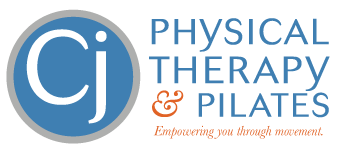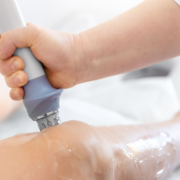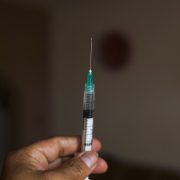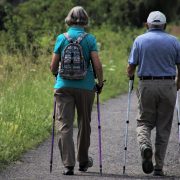PRP for Knee Pain? What You Need to Know Before You Try
If you’ve been dealing with knee pain that just won’t go away – chances are you’ve come across Platelet-Rich Plasma injections – also known as “PRP.”
Although PRP has been around for decades, it gained popularity in the early 2000s when high-profile athletes began using it to accelerate healing. More recently, it’s become more well-known thanks to the “longevity craze” – where people are actively searching for natural solutions and cutting-edge technologies to improve healing and avoid procedures, surgery, or medication.
Like other regenerative therapies, I appreciate PRP because it works with your body’s own healing abilities. It offers a healthier alternative to cortisone injections and medications, which can damage joints and organs over time. In some cases, PRP has even helped people avoid major surgery – an option that carries its own risks. PRP treatment involves taking a small blood sample, spinning it in a centrifuge to isolate the platelets, and injecting the concentrated solution into the knee joint. Platelets are rich in growth factors that support tissue repair – which is why proponents believe PRP can accelerate healing.
But despite its benefits, the real question is: “Is PRP the best first course of action for my knee pain?” It’s expensive, it’s invasive, and results can take months to appear. Let’s take a closer look at the pros and cons so you can make the best decision for yourself.
PRP outcomes aren’t always predictable.
Some people experience relief and improved function, while others feel little to no difference. A 2023 meta-analysis published in Annals of Medicine and Surgery found that PRP outperformed both corticosteroid and hyaluronic acid injections at the six-month mark. But that relief was not immediate. PRP is a waiting game. Results can take several months, and in some cases, may never fully arrive. This delayed response and unpredictability often pushes people toward cortisone shots for their fast – though temporary – relief. Ultimately, PRP success varies widely depending on your condition, the protocol used, and the provider’s skill.
Another factor to consider with PRP is cost.
Most regenerative therapies aren’t covered by insurance. One PRP injection can range from $500 to $2,000, and many protocols recommend two or three injections. Add in the long waiting period for results, and it may be wise to explore other options first. One of the biggest complaints I hear from patients is that they jumped to PRP too fast, spent the money, and either stayed in pain or the pain came back a few years later.
The good news is that the growing interest in longevity has brought other effective technologies to market. When people ask me about PRP – I often say it’s a great treatment – but if you haven’t yet explored some of the precursors to PRP – it might be worthwhile. Regenerative therapies like shockwave (high-pressure soundwaves) and EMTT (extracorporeal magnetotransduction therapy, using high-frequency magnetic energy) stimulate blood flow, activate tissue repair, and reduce inflammation. Like PRP, these treatments are natural and enhance your body’s ability to heal. But unlike PRP, they’re non-invasive, require no downtime, and often deliver results more quickly. I typically recommend trying these options first. For many people, they’re enough to get healing and moving again – fast – so you’ll know whether you even need PRP.
While relatively new to the market, both shockwave and EMTT have shown promising results – especially when compared to more invasive options like PRP.
A 2024 meta-analysis published in Scientific Reports found that shockwave therapy significantly reduced pain and improved function in patients with mild-to-moderate knee osteoarthritis. And unlike PRP – which can take months to show results – shockwave and EMTT often begin working within just a few sessions, sometimes as quickly as two to four weeks. Studies comparing shockwave to cortisone have also found that while cortisone may provide faster short-term relief, shockwave offers better long-term outcomes – typically within one to three months – but without the harmful side effects. Even more encouraging is emerging evidence that combining shockwave with EMTT yields even better outcomes than using shockwave alone.
Though research on knee pain is still developing, early studies and clinical experience suggest the two therapies work synergistically to accelerate healing, reduce pain and inflammation more effectively, and help people return to activity faster. For many, this combination offers a more efficient, less invasive alternative to PRP – in both outcome and timeline.
Cost is another important consideration. While shockwave and EMTT aren’t necessarily “cheap,” they’re generally more affordable and lower-risk than PRP. A full course of treatment typically costs around $2,000, and most people notice improvement within a few weeks. Compare that to PRP – where the total cost may be similar or higher – but you’re waiting months just to know if it worked. This is why shockwave and EMTT are often a smarter first step. You get faster feedback and, in many cases, relief without needles or downtime.
But what if you’ve already had PRP and didn’t get the results you hoped for?
A 2023 study published in Cureus compared PRP alone to PRP combined with shockwave in patients with chronic patellar tendinopathy. The group that received both had significantly better outcomes, especially in the first month. This suggests that even if PRP is part of your treatment plan, combining it with shockwave – and potentially EMTT – can improve your outcome and shorten recovery time.
Of course, no treatment works for everyone. The right solution depends on your condition, goals, and how much time and money you’re willing to invest. But when weighing your options, it often makes sense to start with less invasive, more affordable treatments. Shockwave and EMTT cost less than PRP, involve no injections, and carry far fewer risks. They also pair well with movement-based therapy or rehab – helping address not just your knee pain – but also its root cause (typically underlying mechanical joint dysfunction).
In the end, PRP injections may be helpful for some – especially those with mild joint degeneration who have exhausted other options. But they shouldn’t be the first thing you try. Evidence shows that non-invasive regenerative therapies like shockwave and EMTT are not only safe and effective, but may work faster and at a lower cost. And unlike PRP, they can be part of a broader plan that restores whole-body movement and function – so your knees stay strong and pain-free long after treatment ends.
If you’re considering PRP for knee pain, make sure you understand the full picture – what it costs, how long it takes, what the science says, and whether less invasive options could help you feel better sooner. Because when it comes to staying active and mobile as you age, getting the right diagnosis – and choosing the right first step – makes all the difference.
Dr. Carrie Jose, Physical Therapy Specialist and Mechanical Pain Expert, owns CJ Physical Therapy & Pilates in Portsmouth, NH, and writes for Seacoast Media Group. If local to Portsmouth, NH, and looking for help, request a FREE Discovery Visit with one of her Specialists by CLICKING HERE.
